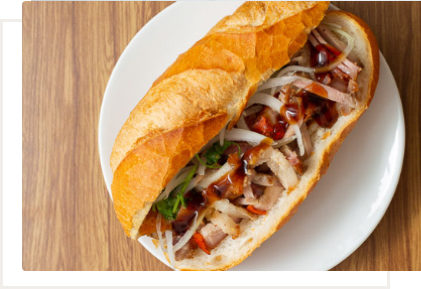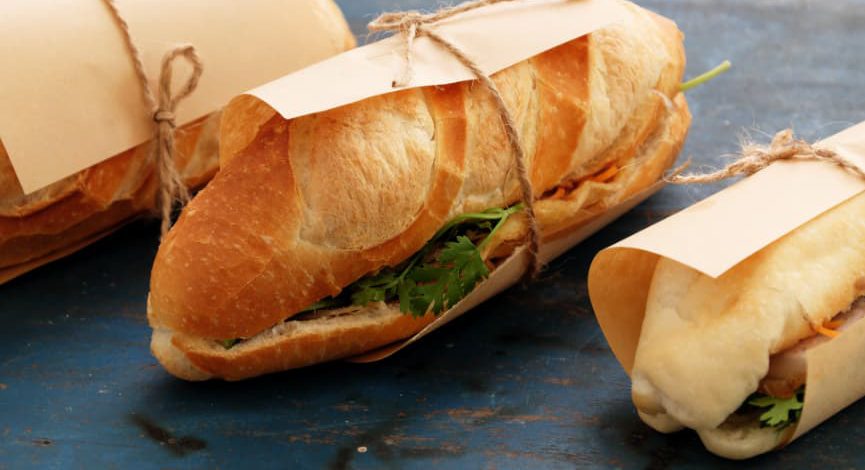The Vietnamese Bánh Mì sandwich is an enduring classic for countless people worldwide. Featuring Vietnamese cold cuts, fragrant herbs, creamy mayonnaise, pickled vegetables, and a variety of regional and family-specific toppings, all nestled within a flaky French baguette, it’s not just an affordable and delectable dish; it’s a symbol of tradition, hope, and resilience. This beloved sandwich holds a special place in the Vietnamese diaspora’s hearts, embodying a nation’s strength and pride.
How it All Began
In the early 17th century, French missionaries entered the Southeast Asian country to spread the Catholic gospel. Wary of foreign influence and meddling, local authorities routinely worked to remove them from the government. Acting as their guardian and benefactor, France took it upon themselves to uphold the protection of her countrymen and its religion!

When Vietnamese Emperor Tự Đức moved to execute 2 Spanish missionaries in 1857, the French used the opportunity as a righteous justification to invade the country on religious grounds. Tourane, today known as Da Nang, was attacked and leveraged against the Emperor to allow Catholics to practice their faith without persecution safely. The Emperor stayed steadfast and refused to give in despite continuous French attacks on the country and their holding of Saigon.
In 1860, the French mobilized their navy three years later and attacked Vietnam with 70 of their ships. By 1862, they managed to control Saigon and most of its surrounding areas. They demanded that Vietnam pay them reparations for their costly invasion. Eventually, this culminated in the formation of the French colony of Cochinchina!
Since it wasn’t economically feasible to transport European goods and foods across the Atlantic and Indian oceans, the French transplanted their crops and livestock to their newfound colony instead. Popular foodstuffs symbolic of the Vietnamese food scene, such as coffee, deli meats and the baguette, came directly from French colonization.
A Vietnamese Original
The Vietnamese diet remained unchanged despite the influx of exotic European ingredients and foods. Significant price and low availability differences had kept the two cultures stratified, but once World War I began in 1914, that would change forever.
At the start of the Great War, 2 of the largest import companies in Indochina were German-owned. As a part of the war effort, the French took control of these warehouses, which were stocked with European goods and foods. They took some of these goods with them on their way to the Western Front but had to leave most of them behind.
This was a boon for the Vietnamese, who, until then, could not afford French and European “delicacies”. As Vietnamese began to familiarize themselves with European tastes, more European cuisine started mixing and marinating with the local Vietnamese cuisine. However, the imposing presence of French colonial rule meant that any “fusion” dishes incorporating the two cultures were looked down upon and kept separate. For some time, Vietnam enjoyed baguettes very Frenchly – with a spread of delicatessen meats and dairy products.
This separation would continue to persist up until the late 1950s when Vietnam forced their colonizers out. With the French out of the equation, the Vietnamese could now freely incorporate French and European ingredients into their cuisine without fear of reprimand. Mayonnaise replaced butter, and local vegetables and herbs were included to accommodate the Vietnamese palate more closely.
Before long, the Bánh Mì became a mainstay of Vietnamese cuisine. To Vietnamese, it represented overcoming and national pride – a modern food for a modern country that could be taken and eaten on the go. It is a culmination of East-meets-West that speaks to the resiliency of a nation that never backed down, even in the face of adversary.
Bánh Mì Goes Global – The Story of Ba Le Deli
The Bánh Mì sandwich has become a beloved Vietnamese staple despite its humble beginnings. However, it wasn’t until two decades later that this iconic sandwich achieved superstar status.
Following the fall of Saigon in 1975, the Vietnamese diaspora spread far and wide across America and Europe. Carrying minimal possessions but a wealth of cultural knowledge and cherished family traditions, many sought to share their expertise by offering traditional Vietnamese dishes to their new communities.
The components of the Bánh Mì sandwich have always remained traditionally affordable, making it an ideal opportunity for entrepreneurs and consumers alike to savour these delicious creations. Comprising a French baguette, pâté, Vietnamese cold cuts, pickled vegetables, and fresh herbs, it’s a dish that embodies humble simplicity and affordability, especially for the thousands of Vietnamese refugees who sought refuge around the world.
Remarkably, the founder of Ba Le Deli, Mr. Ba Le himself, was an expatriate who sought refuge in Canada to escape the turmoil of the Vietnam War. While many of his family scattered across the United States to settle, Ba Le and a few of his siblings made the courageous decision to establish their new lives in Canada.
And so, the rest, as they say, is history.

